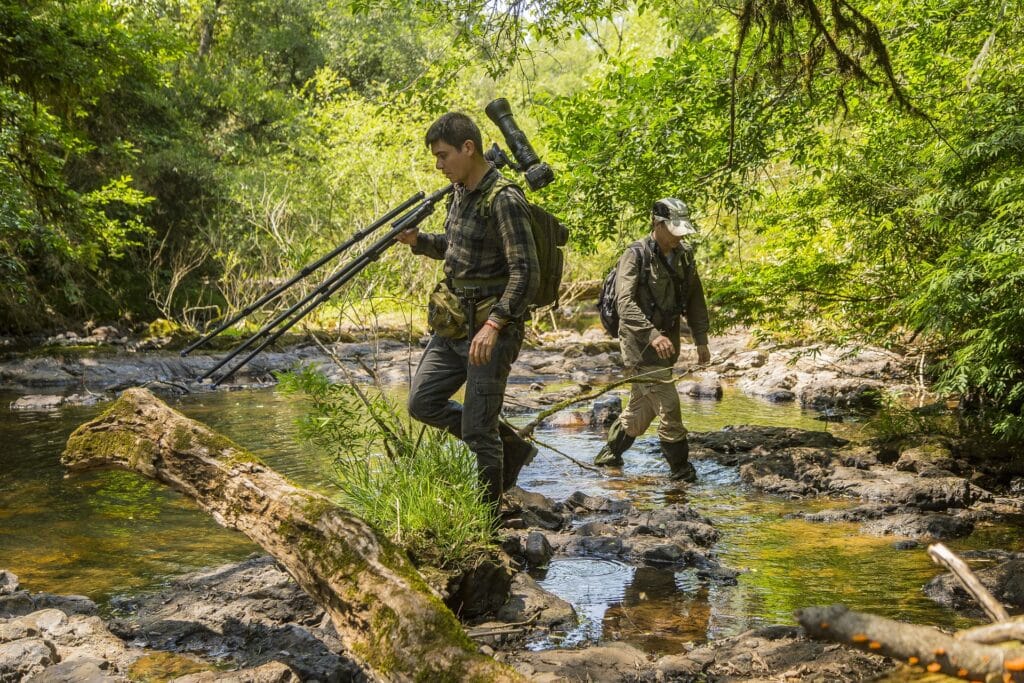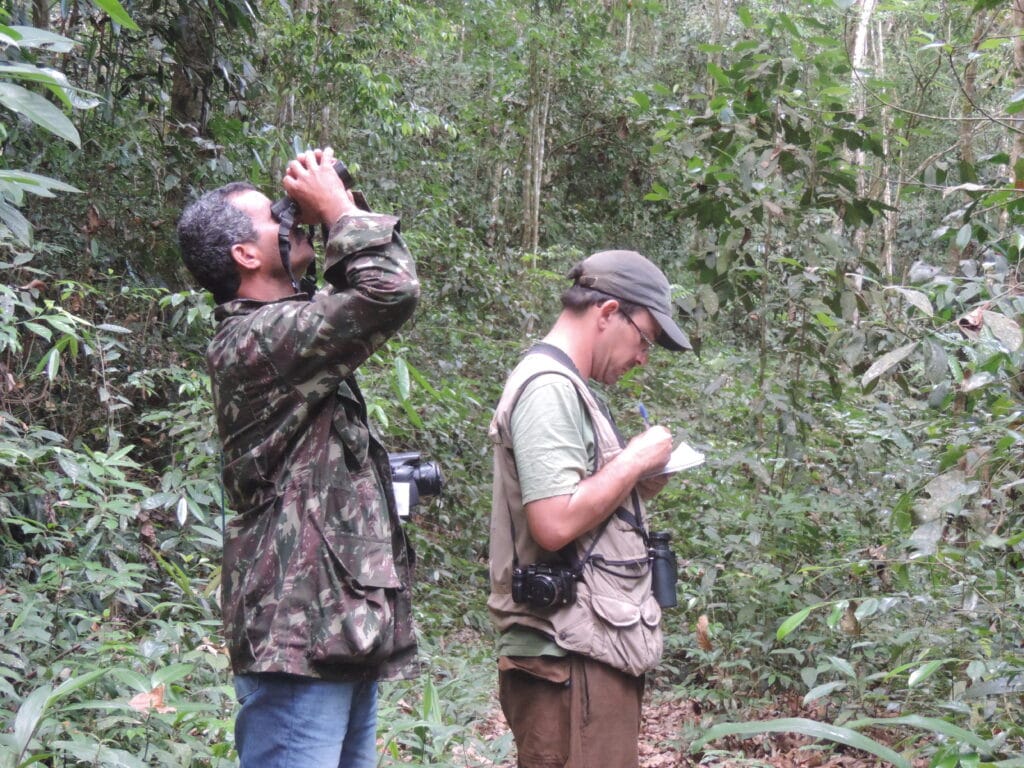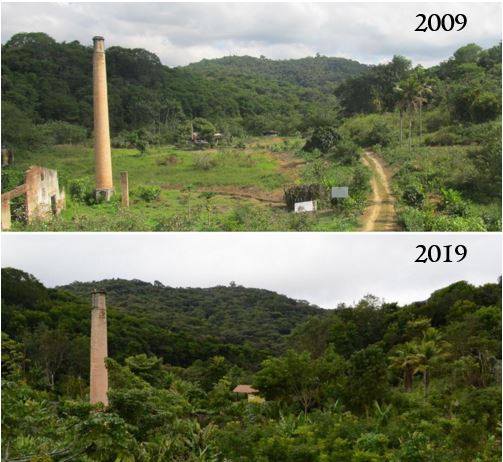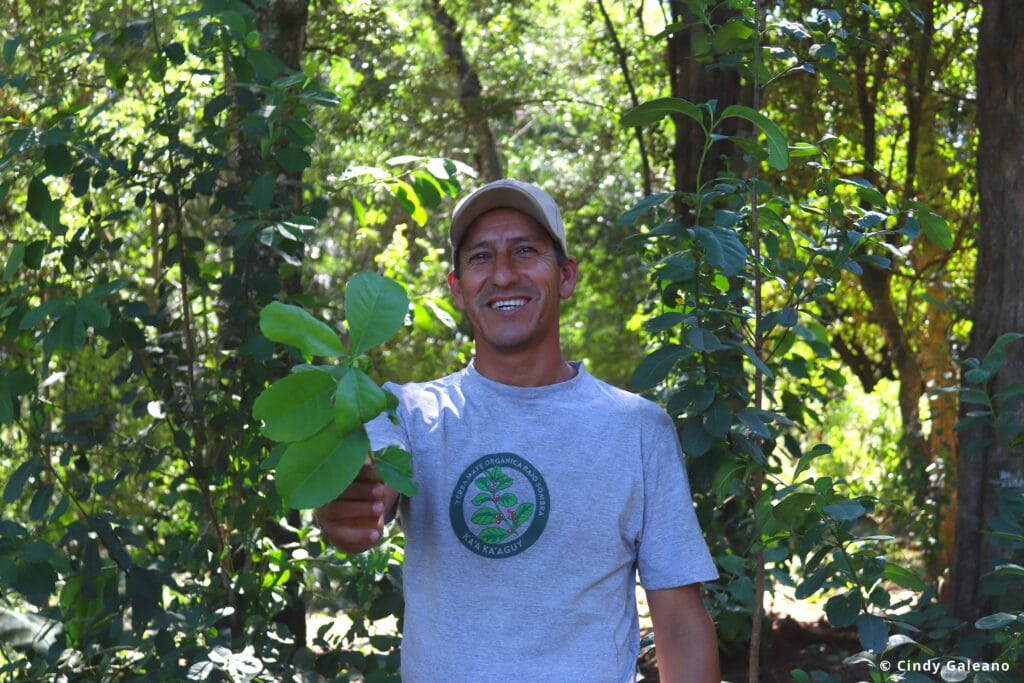The future of habitat restoration: the Atlantic Forest way

From new forest corridors to the production of shade-grown commodities, restoration work in the Atlantic Forest of Argentina, Brazil and Paraguay is crossing country borders and taking landscape conservation into new realms of ingenuity.
The Atlantic Forest was once an unbroken tapestry stretching from northeast Brazil along the coast down to northern Argentina and Paraguay. Considered one of the top five global biodiversity hotspots and historically one of the world’s largest forests, the biome has been significantly degraded, and now only 16% remains: the ancient tapestry is in tatters.
Despite this dire situation, isolated patches of Atlantic Forest still provide key services to millions of people and habitat for important species. The restoration challenge is to reconnect these patches and weave the tapestry whole again.
It is of course not simple, and innovative solutions must be found. The ancient Atlantic Forest tapestry is now a modern patchwork landscape – a social as well as an ecological system – meaning that for conservation success and restoration to be sustainable, the needs of people today must be met without compromising the future.
A landscape approach
One way to achieve this is through the sustainable production of commodities. “Today, conservation-friendly production is considered not only innovative,” says Andrés Bosso from Aves Argentinas (BirdLife in Argentina). “It is also perceived as a positive and – thinking empathetically – inevitable course of action.”
Drivers of deforestation such as timber sales, cattle farming or even illegal marijuana cultivation are often also sources of immediate income for local inhabitants with few viable alternatives. Such is the case for a large number of smallholders inhabiting what remains of the Atlantic Forest. Transitioning to sustainable land-use practices – a truly modern approach if done properly – is thus a fundamental conservation goal.
To make this work, BirdLife and Partners are seeking solutions that make economic as well as ecological sense. Forest restoration is inextricably linked with land-use practices and policy, strategic alliances and co-management, market-driven agroforestry projects and ecotourism. For the three Atlantic Forest BirdLife Partners – Aves Argentinas, Guyra Paraguay and SAVE Brasil – all of these strategies are on the table.

Connecting the dots
In BirdLife’s Atlantic Forest Programme, restoring ecological connectivity and thereby recovering overall forest health basically boils down to two interweaving threads: joining one forest fragment to another, and working with the right people.
In the northern reaches of the biome, SAVE Brasil helped establish and support the management of the 6,000-hectare Murici Ecological Station and purchased 360 hectares of Atlantic Forest in the 100-km distant Serra do Urubu, where a private reserve was established. With these two strongholds, SAVE is now designing a Serra do Urubu-Murici forest corridor to connect existing forest patches between the two sites, and prioritise areas for forest restoration.
There are essentially two ways to restore a forest: you can fence off forest fragments and let nature do the rest, or you can plant native plant seedlings and monitor them to ensure optimal survival rates and actively reconstruct the original habitat. In many cases, a mixed approach is used.
‘Jump starting’ forest recovery with active restoration gets things moving but is expensive. Passive restoration is cheaper, but it takes a long time. SAVE Brasil is doing both, having started restoration activities within the Murici Reserve, and helping to establish a network of native plant nurseries, seed collectors and knowledgeable individuals to deliver and monitor restoration efforts in the region.
When the idea is to restore the natural flow of things, nature always helps out: planting more trees effectively attracts more birds and insects, which then actively take over much of the required ecological ground work to regenerate the ecosystem.
Even with help from the birds, forest restoration is a massive endeavour that can quickly exhaust resources. Nor is it guaranteed to work, especially if conservationists fail to consider the presence of human residents and their activities. In the Atlantic Forest, this typically means farmers and livestock producers.
“We want to encourage a system that combines agriculture, animal rearing and forest restoration, and generates mixed-revenue streams to help keep forests standing,” says Alice Reisfeld, SAVE Brazil Program Manager. “We expect this approach to have measurable benefits for the livelihoods of local landowners.”
Matters can get complicated when the landowners involved are reticent, even when the dialogue is about sustainable production practices that will benefit them. “Many landowners are not aware of the possibility of raising crops and cattle in a more sustainable way that will increase their productivity and help them access new markets, while also generating environmental services,” says Bárbara Cavalcante, Co-ordinator of the Northeast Atlantic Forest Project, SAVE Brasil. “That’s why we will implement demonstrative units in a few properties, so that others can also learn and allow replication of this model.”


It starts with a cup of tea
Meanwhile, in the southern Atlantic Forest, Guyra Paraguay and Aves Argentinas are under similar pressure to reconcile forest restoration with local economic interests. Their main answer to this conundrum is shade-grown yerba mate (used to make a popular caffeinated drink), an impressively simple yet sophisticated agroforestry initiative whereby local producers receive a premium for a forest-friendly product.
Guyra Paraguay is looking to take its shade-grown yerba mate model to scale. However, as always there are challenges. Among these is the illegal production of marijuana in the San Rafael Reserve. The prospect of producing forest-friendly yerba mate alone is often insufficient to convince smallholders to forego the highly lucrative marijuana business, a major driver of forest degradation and forest fires. For such reasons, Guyra Paraguay is promoting the diversification of smallholder farms, so that farmers can tap into multiple income streams at different times of the year.
Cross-border restoration
A key element in scaling the shade-grown yerba mate initiative is to work with other organisations wanting to do the same things for the same reasons. Thus, Guyra Paraguay has teamed up with Aves Argentinas to stitch together farms adopting forest-friendly yerba mate production to create an ‘eco-productive’ corridor linking Atlantic Forest fragments and Key Biodiversity Areas between south-eastern Paraguay and north-eastern Argentina.
This corridor is already showing measurable benefits for birds and other biodiversity within the agroforestry plantations; furthermore, it provides a framework for the shade-grown yerba mate initiative to expand, all the while growing synergy between the relevant BirdLife Partners and their respective local alliances. Such alliances are the stuff of 21st century conservation.
By way of localised patchwork initiatives, the Atlantic Forest as a whole is gradually being reassembled. Working alongside and in the interests of the local people who work and influence the landscape, BirdLife Partners and their allies are implementing modern conservation initiatives that draw transformative power from the union of economy with ecology. Piece by piece, the Atlantic Forest tapestry is gradually being woven back together again.
Josefa Caetano, a farmer in Brazil’s Atlantic Forest, captures the reason why this is working: “I could cut everything down, sell all the wood and plant crops, but I don’t do this because I understand the damage I would cause for the future.”
This Atlantic Forest work is currently supported by the Aage V. Jensen Charity Foundation, the Hempel Foundation, WWF-Brazil, Trillion Trees and the BirdLife Forest Accelerator programme.
“I could cut everything down, sell all the wood and plant crops, but I don’t do this because I understand the damage I would cause for the future.”Josefa Caetano, a farmer in Brazil’s Atlantic Forest
Stay up to date
Sign up to receive the latest bird conservation news. You’ll also receive updates about our projects, science and other ways to get involved including fundraising.
Thank you for your support, we are committed to protecting your personal information and privacy. For more information on how we use your data, please see our Privacy Policy. You can unsubscribe from emails at any time by using the link in the footer of any email from us.

